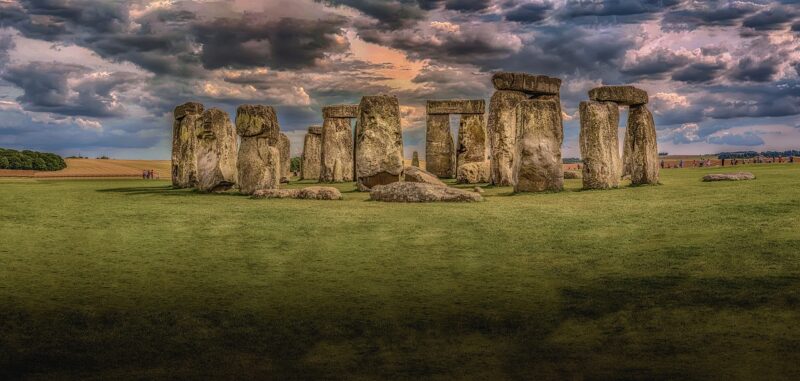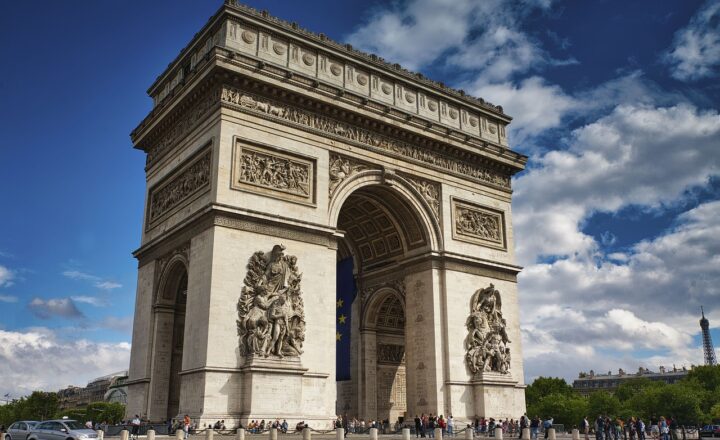
The Georgia Guidestones, often dubbed as America’s Stonehenge, continue to intrigue visitors and researchers alike with their cryptic inscriptions and mysterious origins. Erected in 1980 in Elbert County, Georgia, these monolithic stones have garnered global attention, sparking countless theories regarding their purpose and the identity of their creator. Despite various investigations and media coverage, a cloud of ambiguity still surrounds this monumental structure.
—
1. A Brief Overview of the Georgia Guidestones
The Georgia Guidestones consist of six granite slabs standing over 19 feet tall and weighing more than 237,000 pounds. They were commissioned by a person using the alias R. C. Christian, and the structure was built to convey a set of ten guiding principles for humanity. Each principle is inscribed in eight different languages—English, Spanish, Swahili, Hindi, Hebrew, Arabic, Chinese, and Russian—making them accessible to a diverse array of people.
The guiding principles include themes of population control, environmental sustainability, and the management of human affairs under a central authority. Most notably, the first guideline reads, “Maintain humanity under 500,000,000 in perpetual balance with nature,” raising eyebrows and concerns over its implications.
—
2. The Mysterious Origins of the Guidestones
Despite the clear inscriptions and the visibility of the Guidestones, the identity of their creator remains a mystery. R. C. Christian approached the Elberton Granite Finishing Company in 1979 with the vision of constructing the Guidestones but insisted on remaining anonymous. The company’s owner, Joe Fendley, described Christian as a well-spoken man, even mystifying in his demeanor, who showed a deep passion for creating a monument to guide humanity.
The project was largely funded by donations from local citizens, furthering the intrigue that surrounds it. Christian only provided vague details about his identity and purpose, leading to various conspiracy theories and hypotheses about the underlying motive behind the Guidestones. Some speculate that these stones are a blueprint for a new world order, while others view them as a call for rationality and responsibility in governance.
—
3. The Inscriptions: Hidden Meanings and Riddles
Each of the ten guiding principles etched on the Georgia Guidestones serves as a reflection of the anonymous creator’s intentions. Here is a brief analysis of the inscriptions:
– 1. Maintain humanity under 500,000,000 in perpetual balance with nature: This guideline raises ethical questions concerning population control. Critics argue that it’s a direct call for eugenics or severe limitations on birth rates.
– 2. Guide reproduction wisely—improving fitness and diversity: While it may seem a directive toward better health, it also raises alarms about who defines fitness and diversity, hinting at potential oppression.
– 3. Unite humanity with a living new language: This suggests a global communication method, which some might interpret as a loss of cultural identities.
– 4. Rule passion—faith—tradition—and all things with tempered reason: This promotes rational thinking over emotional and cultural traditions, fostering a sense of modernism.
– 5. Protect people and nations with fair laws and just courts: Many interpret this as a call for equality in governance, although who decides what is ‘just’ remains contentious.
– 6. Let all nations rule internally, resolving external disputes in a world court: This echoes an idealistic vision of global unity under laws rather than warfare.
– 7. Avoid petty laws and useless officials: A challenging critique of bureaucracy embedded within the inscription.
– 8. Balance personal rights with social duties: A reminder of the thin line between individualism and collectivism.
– 9. Prize truth—beauty—love—seeking harmony with the infinite: These ideals emphasize personal enlightenment and connection to the universe.
– 10. Be not a cancer on the Earth—Leave room for nature—Leave room for nature: The closeness to environmentalism is apparent, however, the wording evokes the unsettling reminder of humanity’s potential detrimental impact.
—
4. Theories Abound: Conspiracy and Interpretation
Given the enigmatic nature of the Guidestones, various conspiracy theories have emerged. Some view them as a dire warning about an impending apocalypse, with the inscriptions serving as guidelines for a post-catastrophe society. Others suggest that they represent the goals of a shadowy elite group aiming for a new world order—a concept that elicits equal measures of horror and fascination.
Moreover, various religious and political factions have claimed the Guidestones as symbols of their agendas, adding to the multifaceted interpretations that thrive around this monument. This has led to both vandalism and preservation efforts as different ideologies clash over its significance.
—
5. An Icon of Controversy
The Georgia Guidestones have become more than just a historical curiosity; they symbolize the complex relationship between humanity, nature, and governance. They invite not only speculation about their true purpose but also discussions about ethical and moral issues regarding population control, environmental responsibility, and societal structure.
Recent years have seen increased media interest and public engagement, with tourism spiking as curious individuals flock to Elbert County. The stones have even garnered attention on social media platforms, becoming a viral source of debate and speculation.
—
Conclusion: A Lasting Legacy of Intrigue
Even decades after their construction, the Georgia Guidestones remain an enigma, sparking wonder and skepticism alike. The dual purpose as both a tourist attraction and a subject of intense debate demonstrates their power as cultural icons. They embody the questions of our time: How do we balance progress with responsibility? What does it mean to lead a sustainable existence? Ultimately, the Guidestones may be puzzling, but they undoubtedly hold a mirror to our aspirations, fears, and philosophical inquiries about the future of humanity. Continue to ponder their messages; perhaps you too might find insight amidst the mystery.
—







